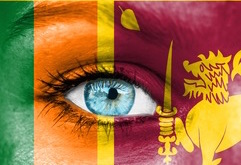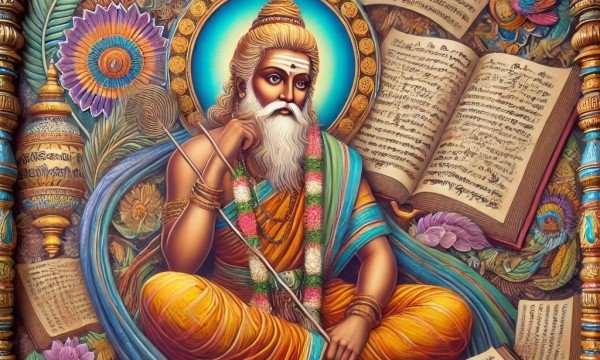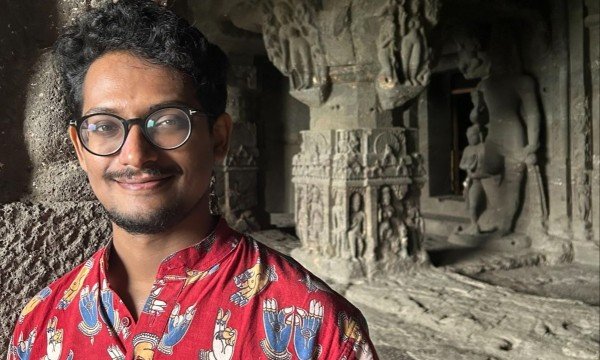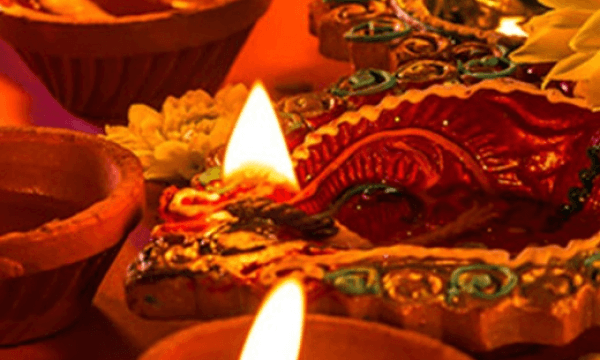
I am reminded of a time I had an acquaintance of Tamil background correct me when I identified as a Tamil Canadian, correcting it to Sri Lankan Tamil. I in return reiterated my choice to identify as a Tamil Canadian. The recent “slit throat’’ incident where a violent and threatening gesture was made by a prominent Sri Lankan diplomat against protesting British Tamils is blatant evidence of a racist Sinhalese government. Though, the argument can be made that this is the act of one government official but missed in this view is that this official is being hailed a hero for his actions by Sri Lankan media and by its Sinhalese populace.
It got me wondering why people of Tamil origin identify as Sri Lankan. Why do Tamils want to identify with the flag, government and people who uphold the primitive barbaric action of the diplomat and celebrate him? Why do Tamils want to identify with a state that celebrated the end of the civil war ignoring the slaughtering of thousands of innocent Tamil civilians?
Maybe they do not know better. Maybe they are not aware of the complexities of the Tamil experience in the state of Sri Lanka. Some of us have lived experiences and memories of the trauma of the war: having bombs fly over us, hiding in bunkers, seeing dead bodies on the street, finding refuge in temples and churches, seeing the sick and dying and escaping with nothing but the clothes on our back. We got lucky and were able to leave the country, but we had to leave everything and everyone behind. I am not Sri Lankan. I refuse to be a Sri Lankan for it is Sri Lanka that killed thousands of my people. Their lives cannot go in vein.
I realize that even education or awareness will not make one who does not care to care. I realize that the Tamils who lived a comfortable life away from the war-ravaged regions may also not care or understand. Those who are of mixed ethnicities may choose to identify with this flag, understandably. The focus of this article is not to educate them as they choose to not care or go by what has been true to their experiences.
The focus of my article is for the foreign born or living abroad Tamils who do not have lived experiences to their parents’ land. Those who left their native land at a young age, the diaspora who live abroad and are born in a foreign country have a relevant reason to not care for they may not know. These young Tamils who have no lived experience at all of the traumas of war and the ensuing racism and discrimination that fueled it. Why should Tamils not identify as a Sri Lankan? Why should Tamils remove the Sri Lankan flag off their social media feeds and Instagram profile? My thoughts and persuasion on this is the objective of my article. I hope I can shed some light through my own observation, lived experience and thoughts. This is a personal reflection on political events; it is my opinion, you do not have to share my views. Though, I hope that the facts help you at least see my viewpoint. The aim is to get the Tamils who do call themselves ‘Sri Lankan’ to reflect on their choice to do so; they may continue to or not, it is ultimately also their own choice.
I have the right to choose my identity just like my right to choose any social identity for myself. Automatically being given the "Sri Lankan" label is not of my choosing. Unfortunately, when filling out official government documents in Canada, I have no choice but to write down the name of an internationally recognized country. There are times I have no choice but to say ‘Sri Lankan.’ During these conversations I start with stating that ‘I am Tamil.’ I get the follow up question of ‘Where were you born?’ I reply to the extent of ‘I was born in the north of an island below India. I am of the minority group, I am Tamil.’ Sometimes I explain the war when it’s appropriate and other times I simply tire out.
The Tamils in Sri Lanka are a nation living with another nation within a state. It is not to say that two nations, Tamils and Sinhalese, along with Muslims and other minority groups, cannot co-exist, in an ideal world this would be possible. The experience for the Tamils in Sri Lanka has not been ideal. The co-existence of the two nations where one has been and continually faces discrimination creates uncertainty and instability. It is hard to co-exist when as a minority group you are always trampled on. It is hard when in the umbrella of ‘co-existence’ you face subtle and not so subtle take over of your identity – the Tamil identity.
Choosing to say “I am Tamil” does not mean I have hatred towards Sinhalese. It means I choose to identify with my Tamil marker more and to honour the legacy of our people who have lost their lives in this ‘hatred war’. “I am Thamil.” I identity with the language and culture of our people. Tamil is both a language and an ethnic identifier.
The Sri Lankan flag is tied to the cultural and social genocide of our people and other minorities. It is tied to land grabbing, discrimination, terrorizing, mass murdering and torturing of Tamils. It is tied to presence of the military in even our places of worship. It is linked to the changing of Tamil towns into Sinhalese names. That flag does not represent me and I therefore do not identify with it.
At the heart of all this is identity politics. Memory and identity go hand in hand. According to John P. Gillis “the core meaning of any individual or group identity, namely a sense of sameness over time and space, is sustained by remembering; and what is remembered is defined by the assumed identity…. that memories and identities are representations or constructions of reality, subjective rather than objective phenomena. Memories help us make sense of the world we live in.” Many hold memories – the Tamils who experienced first hand know the effect and impact of war. There are Tamils from Sri Lanka who grew up elsewhere in the island, notably in safe, comfortable areas in the south surrounding the capital of Colombo, who did not experience the effects of the war even though they lived their life in the country. Sri Lanka has a long history of Sinhala favoured nationalism that came at the expense of its Tamils. We all know that a war happened. Many of those born here, the second generation, may have no idea what it was about. They didn’t live it.
Let’s take a look at the Sri Lankan flag and what it represents. The original flag contained only the gold lion and the four leaves which are Buddhist symbols and the sword is said to represent authority. Ironically, the fundamental principle of Buddhism is peace which is contradictory to the sword on the flag. The lion stands guarding the larger red band which represents the Sinhalese. Even the flag symbolically and accurately portrays the exclusionary and discriminatory practises of the state towards the minorities who live within it. From its conception as a state, the Sri Lankan flag represented a state that was not inclusive of its minorities and speaks to the authoritarianism of the majority group. Years later only was the flag modified to include the smaller green and orange bands, with the former representing Muslims and the latter representing Hindus. The flag itself speaks to the historic and current treatment of minorities in Sri Lanka by its government and by the policies instituted by elected officials. The Sri Lankan flag is a bloodied one, the sword is stained with the blood of innocent Tamils.
The state is the organization that is the governing authority of a political unit of a body of citizens. A fundamental feature of the state is in its capacity to care for its people, to be the “main protector of cultural and physical security of people as well as the main distributor of cultural rewards and material resources.” When one group is ‘othered’ and its interests are overlooked in interest for another, it should not be a surprise that the former does not identify with that government or the state. ‘Multinational’ states employ various measures to assimilate, homogenize and undermine the unfavoured nation within the state, including ethnic cleansing. Sri Lanka is exemplary in its employment of measures to erode the culture and resources of minority Tamils. The national groups then in turn struggle for “independence, autonomy, just distribution of resources, more recognition, readjustment or revenge for historical wrongs and protection of resources and territory.” This is what Tamils, albeit not all, in Sri Lanka have experienced and are experiencing. Some Tamils who lived a well-connected, secluded life in Colombo or surrounding areas were spared of this ‘poor’ treatment and have a different narrative from the average Tamil's narrative.
Tamils make up a nation within a state. Sri Lanka is made of many ethnic groups encompassing different nations. The feeling of belonging to a state comes from the inclusion of racialized bodies within the state’s narrative. The national identity is a story a nation has experienced, featuring mythical and imaginary elements. Those who are included in this mythical narrative identify with the state and those who are ‘othered’ and excluded create another form of belonging to themselves and identify with their own nation. “Nation is comprised of unique belongings of religious and secularist ideas, symbols, practises and identities which they encompass within their boundaries of national belonging.” There are elements of individual and collective identities. Identity is an individual’s sense of self. In Sri Lanka, Tamils are ‘othered’ and they therefore feel and form a unique collective identity as ‘Tamils’ that is outside the identity of being ‘Sri Lankan.’ The narrative of the Sinhalese and Tamils widely differ and are antagonistic, hence a source of conflict ensues.
This exclusion of Tamils can be traced back to pre-historic times. Sri Lanka is full of examples where state sponsored deliberate actions have been taken to exclude Tamils from the Sri Lankan narrative. Where does the ethnic tension come from? Let’s look at some important historical events, post colonialism and independence.
The origins derive from ancient rivalries which existed between Tamils-Sinhalese with each side defending their culture.
The last colonial British ruling had the most impact on the politics of today. In the 19th century, during the British ruling, many English missionaries set up schools in Tamil areas which resulted in Tamils’ higher education in English and their consequent domination in universities and in white collar jobs. When the British empire left in 1948, they handed over power and ruling of the country to an assertive Sinhalese majority. Successive Sinhalese governments enacted a full-blown Buddhist revival and enacted laws to revert the country into a Sinhala-Buddhist unitary state. Herein follows the intense ethno-political struggle.
In 1956, the government enacted the Official Language Act to make Sinhala the official language which imposed barriers to exclude Tamils from job and school opportunities. This was done to eliminate Tamils’ abilities to get into universities and remove them from white collar jobs. This law dismantled Tamils’ political and economic power and it proved successful.
Thousands of Indian Tamil laborers who were working in Sri Lanka’s tea plantations were also deported and forced out of the country in an attempt to reduce the population of Tamils in the state.
In 1972 a new constitution was created which placed “Buddhism” as the foremost religion of Sri Lanka, excluding followers of other religions and removed safeguards for minorities. The homes of Tamils and their businesses were set on fire, many were prisoned and killed in ethnic riots. When excluded Tamils’ calls for a government based on federalism and greater autonomy for themselves in the North-East went unheard for decades, a guerilla group called the LTTE (Liberation Tamil Tigers of Eelam) formed in 1983 to take up arms against the government. The LTTE fought to create an independent state for the country's ethnic minority Tamils.
The war between the LTTE and the government military forces continued until 2009 and saw the loss of lives of thousands of Tamils. It is estimated that 80 000 to 100 000 Tamils died during the war with 40 000 of them being killed during the last few months of the war, though the real figures may be higher states the International Crisis Group. The Sri Lankan government blocked international media during the final phase of the war and successfully conducted its genocidal campaign. There has been no accountability for the mass murdering of Tamils by the state’s army and the government has not taken any responsibility for its actions. There are Tamils awaiting years for an inquiry on their missing family members.
The issues underlying the war was seen and portrayed as a ‘terrorism’ problem by the government and the response was largely a military one. This approach did not address the ethno-political issues that started the war in the first place. The war’s end brought relief for it meant the end of aerial bombs being dropped by Sri Lankan Air Force and forced conscription by the LTTE. Now the war is over, yet why is there still a huge military presence in the North-East?
The military presence is evident everywhere. You can even find them in places of worship, inside temples. The military enjoys funding for expansion projects on fertile soil that can be better utilized to meet the needs of the local people who live there. The military enjoys domination of post-war reconstruction effort, serves as an occupation force and creates an atmosphere of fear. The military has confiscated land from Tamils to build bases and grow crops. They set up roadside stalls to sell the crops which further negatively impacts on local Tamil businesses and their livelihood. The military dominates development and humanitarianism projects, it is they who decide ‘’how, where and by whom resources and services are distributed; and who benefits from them.” Development is monopolized by Sinhalese-owned companies where money goes into their pockets and Tamils are excluded from the fruits of the economic development. Where development has occurred, it has been done to facilitate the movement of the military. The militarization of the North continues.
The end of the war has also given way to ongoing Sinhalization of the North. Sinhalese are streaming in to set up businesses. The state sponsored settlement of Sinhalese in Tamil areas inevitably will change the demographics of the region. The cultural and social impact of this on Tamils is evident already. They are deliberately Sinhalizing the North to weaken their claims for autonomy and independence.
Sinhala politicians have competed on election platforms on their level of anti-minority stance and this continues today. To be successful in elections Sinhala politicians must uphold Sinhala-Buddhist nationalist principles which marginalize Tamils and others. Since Tamils and other minorities are numerically insignificant for election votes, politicians adopted and continue ethnic majoritarianism politics. The resulting Sinhala Buddhist nationalism is hostile to the interests of Tamils and other minorities.
It is not just political, economic or social genocide that is occurring but also elements of religious hostility also exist. Tamils are either Hindu, Christian or Muslim but now Buddhist shrines exist in only-Tamil areas. This is exemplary of the religious encroachment on Tamil lives.
These examples all speak to the exclusion and lack of regard for the lives of minorities and their welfare and they are endless, but for the sake of simplicity, I will stop here. This feeling of alienation encroaches Tamils’ sense of safety and they fear for their lives. Their search for safety and better opportunities has resulted in the exodus of thousands of Tamils from Sri Lanka to various parts of the world. The historical and individual experiences of Tamils have created a new collective identity for them, which again transcends a ‘Sri Lankan’ identity, to create an identity as Tamil diaspora.
National identity is a choice. It is a choice on which nation you feel a greater attachment to, which speaks to who you are and is true for you. I would rather have my identity be tied with the Tamil diaspora regardless of the country than with the state of Sri Lanka. I say, “I am Tamil Canadian.” Others are 'Tamil Australian' or 'Tamil American' and so on. Irrespective of the country, the marker includes ‘Tamil.’ The Tamil diaspora identity has become our new national identity. Everyone has a choice in how they identify themselves, but we must remember that the identification comes with responsibility for their uses and abuses. The choice affects not just ourselves but others.
The Sri Lankan state has done a good job of disempowering the orange band on its flag and now it has turned its attention towards targeting the green band. The end of the war did not mean the end of abuse against minority groups in the country. It used to be the Tamils and now it’s the Tamils and the Muslims. Businesses, homes and mosques owned by Muslims in the country is deliberately being set on fire by Sinhala mobs led by Buddhist monks. Muslims are being discriminated and targeted and the security officials and the government idly stand by, not doing anything to stop the violence. Do you see the pattern? The point can be made that this is state sponsored violence. That would not be surprising. It’s 2018, what’s happening to Muslims today in the state is nothing new, it very much resembles the earlier stages of what happened to the Tamils. The past experiences of racial inequalities of the Tamils and that of today’s Muslims makes one thing clear: how little value is given to minorities, their lives, livelihood and culture in the state of Sri Lanka. It shows how much Sinhala supremacy plays out in all spheres of the social life and how exclusive it is to the Sinhala nation. These are not isolated events. The rise of the LTTE was a result of the racial inequalities in the country, it arose as a struggle for liberation and justice. It, however, gets portrayed as a ‘terrorist’ uprising. Without looking at the war for what it was, a movement that arose to counter Sinhala supremacy, Sinhala rule and radical oppression, the problem will not get addressed nor go away.
When looking at the war, the larger issues that created the war in the first place must be looked at. It started and continued because Tamils are excluded from the popular imagination of the state. Tamils wanted to create a new imagination for themselves that encompassed an independent, autonomous and free border for themselves to govern and decide their own affairs. When a group is ‘othered’ it should not come as a surprise that the group will seek another identifier marker that provide them with a sense of belonging, to form a collectivity, to look after their own welfare. Even the liberation movement was very much part of the Tamil narrative, though its core has been eliminated. But the lived experiences and memories from this residue hasn’t left the minds of those who have experienced it.
Just because Tamils are of the minority group, are they not to be given the right to basic human rights and self-determination to better meet their own needs and not be part of a state that does not? Are they not allowed to create a political space in which they are not viewed as ‘aliens’ to the national story? Aren’t the Tamils allowed to create a space where they do not have to struggle to have their voice heard and live free of violence and fear? The continuation of generations of disembodied racialized bodies who are removed from the larger popular imagination will have negative consequences to the very existence and development of the healthy, democratic society that Sri Lanka is successfully failing at.
The war was a violent confrontation full of terror that dismembered the lives of Tamils and scarred them forever. Ethnic tensions, violence and discrimination continue with impunity to this day. However, this does not have to be a lifeline to the Tamil narrative, for it is a long and ongoing process. The Tamil national identity in the state of Sri Lanka is linked to our bigger transnational identity as Tamils, irrespective of our country of residence. This process will continue, at times it will stall and other times it will accelerate. The national belonging of Tamils exists in the state of Sri Lanka and our transnational belonging exists also. Nevertheless, our narrative has a destiny – one that I hope is of sustainable peace, autonomy and independence, full of solidarity and collaboration for the betterment of our people and the land of our ancestors. May a new narrative be written for the Tamils in Sri Lanka, one that builds around the bond between the national and transnational body of Tamils that is filled with freedom to live their lives and carry on the richness of their culture.
For me, the reasons for not identifying as Sri Lankan is simple. I am Thamil. I am Tamil. I am Tamil Canadian. This is my identity. What’s yours?

























